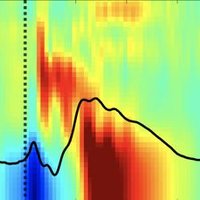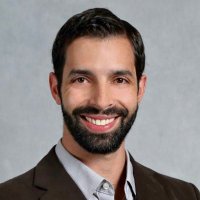
Sahit Nallani Menon
@sahitmenon
MS4 @UCSDMedSchool • formerly MRSP @NIMHGov, BME @USC • Incoming PGY-1 @VUMCPsych • Interests: CL, neuromodulation, peak performance • Marathoner, yogi.
ID: 436443700
http://www.sahitmenon.com 14-12-2011 05:43:55
2,2K Tweet
708 Followers
916 Following

I had a great time presenting at Institute for Technology in Psychiatry, an ACNP affiliate conference today! Grateful to work with Dr. Ellen Lee UC San Diego School of Medicine UC San Diego Department of Psychiatry on leveraging ML to classify salient predictors of cognitive impairment. Hope to continue bridging tech and psychiatry.



We're excited to share NaviNIBS, our new open-source tool 🔨 for neuronavigated noninvasive #brainstim 🧠⚡️ 🎉Congrats to our co-director Chris Cline, lead developer of NaviNIBS! We hope to enable new possibilities for innovations in neuronavigation #TMSEEG Wu Tsai Neurosciences Institute (1/5)



Please join us Wed, Dec 18, 1:30-2:30P ET for virtual talk "Enhancing response through EEG-triggered-TMS: Step 1 in studying compulsivity" by Sunday Francis National Institute of Mental Health (NIMH) working with Sarah "Holly" Hollingsworth Lisanby, MD + Lindsay Oberman. DM me your email if not on the list to get the link.


Amplifying the work of some of my colleagues Duke Psychiatry & Behavioral Sciences - ECT is an impt treatment modality that can be life saving. All medical interventions have benefits and risks, and well trained clinicians discuss these in pt& and family centered ways. sciencedirect.com/science/articl…


The SLaM Brain Health Clinic now published in BJPsych Open here doi.org/10.1192/bjo.20… Centre for Healthy Brain Ageing, KCL HealthTech Research Centre in Brain Health Dag Aarsland Prof Clive Ballard Institute of Psychiatry, Psychology & Neuroscience NHS Maudsley NIHR Maudsley Biomedical Research Centre (BRC) Ageing Research KCL Royal College of Psychiatrists Old Age Psychiatry 🌈 Alzheimer's Society Alzheimer's Society For Researchers Research at ARUK Summary 🔽


Maybe slightly odd timing, but we'd like to announce: A new AFNI Bootcamp for FMRI/MRI, Jan 29-31, 2025. This part will focus on group analysis, statistics, surface analyses, results reporting and more. This event will be virtual. Please see here: discuss.afni.nimh.nih.gov/t/afni-bootcam…

This is (to my knowledge) one of the first intracranial electrophysiological demonstrations that TMS to the dlPFC reaches the subgenual cingulate cortex! More to come in this space soon 🧠⚡️ Aaron Boes Jing Jiang Nick Trapp Wu Tsai Neurosciences Institute



Excited to share that I matched Vanderbilt Psychiatry on the research track! Looking forward to the next chapter in Nashville, and learning the ropes from Heather Burrell Ward, MD Joshua Ryan Smith, MD


Ever wonder why some brain regions are more excitable? Using intracranial stim and recordings in humans, our team led by @Momi Sara Parmigiani Wu Tsai Neurosciences Institute andrea pigorini John Griffiths Precision Neurotherapeutics Lab @ Stanford discovered a fascinating hierarchy in these neural responses 🧠⚡️




![Zack Williams, PhD (@quantpsychiatry) on Twitter photo In a simulation of an abbreviated Bush-Francis Catatonia Rating Scale, four items (excitement, mutism, staring, and posturing) were able to screen for catatonia with 91% sensitivity (95% CI 90–93%) vs. the full BFCRS screen [99% sensitivity]! This "catatonia quick screen" seems In a simulation of an abbreviated Bush-Francis Catatonia Rating Scale, four items (excitement, mutism, staring, and posturing) were able to screen for catatonia with 91% sensitivity (95% CI 90–93%) vs. the full BFCRS screen [99% sensitivity]! This "catatonia quick screen" seems](https://pbs.twimg.com/media/GqXNkIEXAAAA22B.jpg)